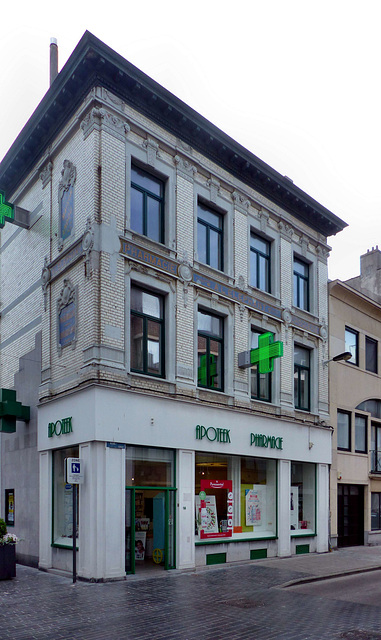Ostend - Jeans shop
Ostend - Fats Domino
Ostend - Passage
Ostend - Shoe store
Ostend
Gournay-en-Bray - Gone!
Gournay-en-Bray - Saint-Hildevert
Gisors - Hotel de Dieppe
Vétheuil - Notre-Dame
Haute-Isle - Église de l'Annonciation
La Roche-Guyon - Mairie
La Roche-Guyon - Château de La Roche-Guyon
La Roche-Guyon - Château de La Roche-Guyon
La Roche-Guyon - La Seine
Les Andelys - Château Gaillard
Choucroute de la mer
Barfleur - Harbour
Gouberville - Notre Dame
Fermanville - Cap Lévi
Tollevast - LEDISTRIBPAIN
Tollevast - Saint-Martin
Tollevast - Saint-Martin
Tollevast - Saint-Martin
Ostend - Art Nouveau
Ostend - Villa Rembrandt
Ostend - Sint-Petrus-en-Pauluskerk
Eeklo - Sint Vincentiuskerk
Zomergem - Aardapelhuisje
Nivelles - Jean de Nivelles
Nivelles - Collégiale Sainte-Gertrude
Nivelles - Collégiale Sainte-Gertrude
Charleroi - Coliseum
Charleroi - Passage de la Bourse
Charleroi
Wachendorf - Bruder-Klaus-Feldkapelle
Wachendorf - Bruder-Klaus-Feldkapelle
Wachendorf - Bruder-Klaus-Feldkapelle
Wachendorf - Bruder-Klaus-Feldkapelle
Porto - Avenida Gustavo Eiffel
Porto - Caves Cálem
Porto - Teleférico de Gaia
Porto
Porto - Ponte Dom Luís I
Porto - Café Majestic
Porto - Coliseu do Porto
Location
Lat, Lng:
You can copy the above to your favourite mapping app.
Address: unknown
You can copy the above to your favourite mapping app.
Address: unknown
Keywords
Authorizations, license
-
Visible by: Everyone -
All rights reserved
-
202 visits
Ostend - Apoteek De Olifant


Since 1265 Ostend is known as a "town". It was located at the "eastern end" of an island, named Testerep. As the coastline was pretty unstable, a new Ostend was founded futher inland, behind dikes.
Ostend was frequently taken, ransacked and destroyed by conquering armies. The Dutch Gueuzen took control of the town. The following siege (1601 to 1604) by Spanish troops ended in the bloodiest battle of the Eighty Years' War, costing more than 80.000 dead or wounded.
When, after the War of the Spanish Succession, Ostend belonged to the Austrian Empire, Charles VI founded the "Oostendse Compagnie" in 1722, that had a trade monopoly with Africa and the Far-East and was allowed to found colonies overseas. But only five years later the "Compagnie" was forced to stop its activities because of Dutch and British pressure.
Since Belgium existed in 1930 Ostend prospered. In 1838 a railway connected the twon with Brussels and Ostend became a transit harbour to England.
Belgian kings Leopold I and Leopold II liked to spend their holidays here and the aristocratic Belgium followed. Posh villas were built and by end of the 19th century Ostend was known as "the queen of the Belgian sea-side resorts".
Ostend was an elegant "Belle Epoque Town. This ended in WWI and WWII, as both wars brought destruction to Ostend. This devastation plus the rise of mass tourism in the 1960s and 1970s changed the architecture of Ostend.
Many of the old historical building, dating back to the "Belle Epoque", have "lost" their ground floor when shops moved in or existing ones got modernized. Sometimes these conversions lack any sensibility. The old inscription reads "PHARMACIE AL ELEPHANT".
Ostend was frequently taken, ransacked and destroyed by conquering armies. The Dutch Gueuzen took control of the town. The following siege (1601 to 1604) by Spanish troops ended in the bloodiest battle of the Eighty Years' War, costing more than 80.000 dead or wounded.
When, after the War of the Spanish Succession, Ostend belonged to the Austrian Empire, Charles VI founded the "Oostendse Compagnie" in 1722, that had a trade monopoly with Africa and the Far-East and was allowed to found colonies overseas. But only five years later the "Compagnie" was forced to stop its activities because of Dutch and British pressure.
Since Belgium existed in 1930 Ostend prospered. In 1838 a railway connected the twon with Brussels and Ostend became a transit harbour to England.
Belgian kings Leopold I and Leopold II liked to spend their holidays here and the aristocratic Belgium followed. Posh villas were built and by end of the 19th century Ostend was known as "the queen of the Belgian sea-side resorts".
Ostend was an elegant "Belle Epoque Town. This ended in WWI and WWII, as both wars brought destruction to Ostend. This devastation plus the rise of mass tourism in the 1960s and 1970s changed the architecture of Ostend.
Many of the old historical building, dating back to the "Belle Epoque", have "lost" their ground floor when shops moved in or existing ones got modernized. Sometimes these conversions lack any sensibility. The old inscription reads "PHARMACIE AL ELEPHANT".
Nicole Merdrignac has particularly liked this photo
- Keyboard shortcuts:
Jump to top
RSS feed- Latest comments - Subscribe to the comment feeds of this photo
- ipernity © 2007-2025
- Help & Contact
|
Club news
|
About ipernity
|
History |
ipernity Club & Prices |
Guide of good conduct
Donate | Group guidelines | Privacy policy | Terms of use | Statutes | In memoria -
Facebook
Twitter

Sign-in to write a comment.